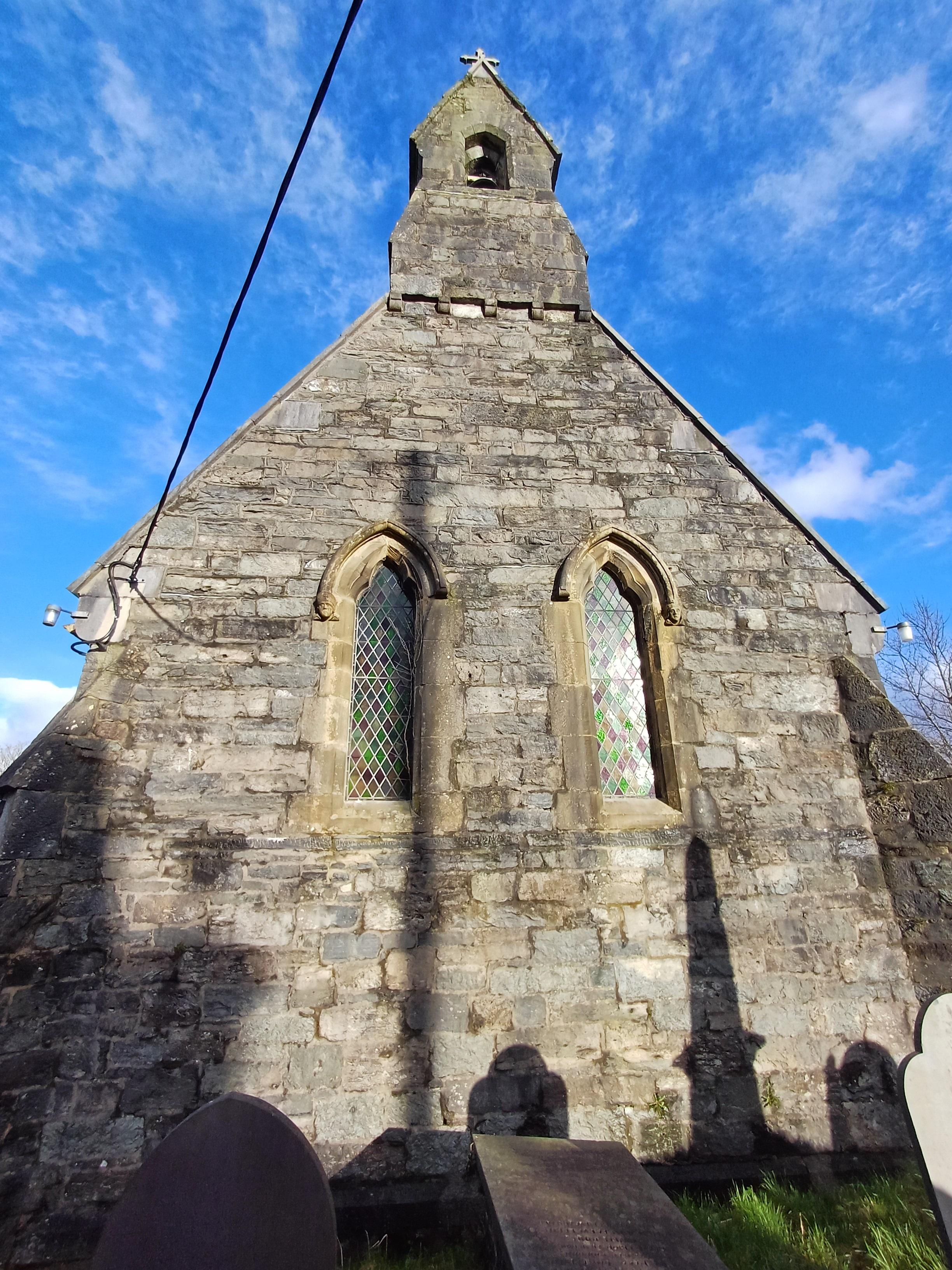Hafan Ifan (St John)
Ysbyty Ifan, Denbighshire
The smallest picturesque village with the biggest history in Wales, centred around our church!

This church closed in 1997 but a community effort resulted in the church reopening in 2009.
Penmachno, Clwyd
Two churches once stood in the churchyard. That dedicated to St Enclydwyn fell into ruin following the reformation and no trace is now apparent. The church dedicated to St Tyddyd (a variant of Tudclud) was replaced by the present building in 1857. The font comes from a 12th century church on the site.
Tudclud, a 6th century saint, was one of the five sons of Seithennyn, co-ruler of Gwynedd. According to legend, one of Seithennyn’s responsibilities was opening and closing sluice gates protecting low-lying land in Cardigan Bay. One night he forgot and the cantref (“hundred”) called Cantre’r Gwaelod was flooded. It is said that the bells of Cantre’r Gwaelod can still be heard under the sea at Aberdyfi. In response to this humiliation, Seithennyn’s sons dedicated their lives to Christian worship.
In the church are four stones from the early period of British Christianity. They may have been associated with the Romans’ first camp in the Penmachno area. Each stone bears a Latin inscription. One is thought to read: 'Here lies Carausius, in this pile of stones'. Another inscription, which could date from 328 to 650, may translate as 'Son of Avitorius, in the time of the consul Justinus'. Another stone, from the late 8th century, has a simple cross.
There is also a high status stone, which may be the marker for Iorwerth, father of Llewelyn Fawr, the first Prince of Wales. A medieval eulogy states that Iorwerth was buried in Llandudclyd, the village’s name before it became Pennantmachno, and later Penmachno. Between the end of Roman rule and the Saxon invasions, this was a major centre where British life survived and flourished.
Many of the church’s records were lost in a fire in 1713. William Morgan (1553 to 1604) worshipped here in his youth. He became Bishop of St Asaph and is best known today for overseeing the Welsh translation of the Bible. It’s said that he learned Latin, Greek and Hebrew from a dispossessed monk, probably Dom Robert ap Griffith, rector of Penmachno from 1551.
Ysbyty Ifan, Denbighshire
The smallest picturesque village with the biggest history in Wales, centred around our church!
Dolwyddelan, Clwyd
A small church at Gwyddelan’s preaching spot was replaced in the early 12th century by a new stone church.
Betws y Coed, Gwynedd
This redundant 14th century church is now cared for by the St Michael's Betws y Coed Trust and welcomes visitors from all over the world.